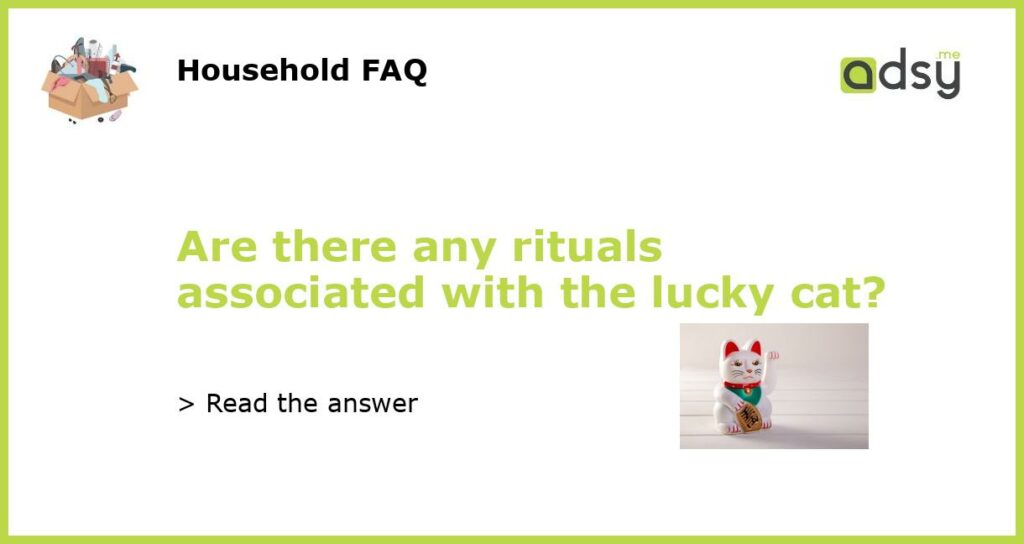The History of Lucky Cats
The lucky cat, also known as Maneki-Neko, is a common talisman in Japanese and Chinese culture. The cat is usually depicted with its paw raised, as if beckoning good fortune. While the origins of the lucky cat are unclear, some believe it was first created during the Edo period in Japan (1603-1868) as a way to bring luck and prosperity to businesses.
Today, the lucky cat is a popular souvenir and can be found in many shops and restaurants across Japan and other parts of Asia. But are there any rituals or customs associated with the lucky cat?
The Custom of Waving the Paw
One of the most well-known rituals associated with the lucky cat is the act of waving its paw. In most depictions, the cat is shown with its left paw raised, as if beckoning in customers or good fortune. Some believe that the left paw is raised to represent the Japanese custom of raising the left hand when beckoning someone, while others think it is simply because the cat looks more balanced with one paw up.
No matter the reason, waving the paw of a lucky cat is believed to bring good luck and fortune. Some people even believe that the higher the paw is raised, the more luck the cat will bring.
Colors and Meanings
Lucky cats come in a variety of colors, each with their own meaning. The most common colors are white, black, gold, and pink, with each color symbolizing a different type of good fortune.
- White: purity and happiness
- Black: ward off evil spirits
- Gold: wealth and prosperity
- Pink: love and relationships
It is common to find lucky cats in multiple colors, each one adding to the overall meaning and symbolism.
Placement and Direction
Another important aspect of lucky cats is their placement and directional orientation. Most lucky cats are placed near the entrance of a business or home, as a way to welcome in good fortune and prosperity. The cat should always be placed in a location where it can be easily seen and where it can beckon in good fortune.
The directional orientation of the lucky cat is also important. Some believe that the cat should face towards the outside of a building, as a way to beckon in good fortune. Others believe that the cat should face towards the inside of a room, as a way to safeguard against the loss of good fortune.
Rituals and Superstitions
While there are no set rituals or superstitions associated with lucky cats, there are some common beliefs. For example, it is considered bad luck to wave the paw of a lucky cat with your left hand, as the left hand is associated with bad fortune in Japanese culture. Similarly, it is believed that a lucky cat should never be placed in a bathroom or facing towards a bathroom, as it is considered bad luck to mix good fortune with waste.
Overall, the lucky cat is a popular symbol of good fortune and prosperity in Asian culture. Whether you believe in its powers or not, the lucky cat is a fun and unique souvenir to bring home from your travels.






